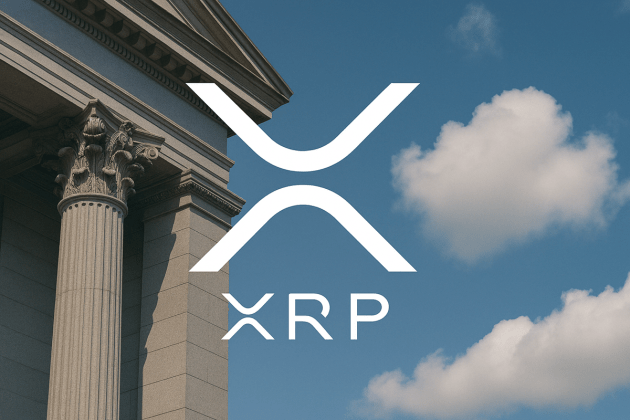Digital currencies continue to disrupt the economy as they gain popularity as assets for investment and as mediums of exchange in financial transactions. Crypto derivatives are a good example of products that have shown rapid growth and continue to do so. And as the crypto market continues to grow, so does the variety of products available within the cryptocurrency space.
Our detailed guide covers the basics of crypto derivative types, trading options, tips for trading, and their advantages and disadvantages.
Types of derivatives in crypto
Simply put, a derivative is any product or contract with a value determined by an underlying asset. In traditional financial markets, derivatives derive their value from assets such as stocks, bonds, interest rates, commodities, fiat currencies and cryptocurrencies, hence the name.
Crypto derivatives work like traditional derivatives in the sense that a buyer and a seller enter into a contract to sell an underlying asset. Such assets are sold at a predetermined time and price. As such, derivatives do not have an inherent value but rely on the value of the underlying asset. For example, an Ethereum derivative relies on and obtains value from the value of Ethereum.
Derivative trades also do not hold nor own the underlying asset. The most popular types of derivatives in crypto are futures, options and perpetual contracts.

Crypto futures
Futures involve an agreement between a buyer and a seller to sell an asset in the future. The specific date and amount are also agreed on ahead of time. Contract details may vary, but the terms are usually similar.
Futures are a popular type of crypto derivative commonly used by institutional investors. Data from futures are typically used to predict future price movements and market sentiment.
Traders may either gain or lose depending on future price changes. For example, if the current price of Bitcoin is at $40,000, an investor may either buy or sell futures contracts in anticipation of either a price decline or an increase.
In any case, if a buyer purchases a futures contract worth one Bitcoin ($40,000) and it increases to $60,000 by the time the contract closes, the buyer will have realized $20,000 in profit. On the contrary, if the price drops to $30,000 by the time the contract closes, the buyer will have incurred a loss of $10,000.
More specifically, Bitcoin futures are agreements between a buyer and a seller to buy and sell Bitcoin at a given price at a specific date in the future. The contract is usually settled in USD or any other currency agreed upon by both parties.
How to trade Bitcoin futures?
The first thing a trader needs to determine when trading Bitcoin futures is the contract’s duration. Exchanges for crypto derivatives usually offer weekly, bi-weekly, quarterly options, and more.
For example, a weekly trade of Bitcoin contracts with each contract amounting to $1 of Bitcoin priced at $10,000 would require 10,000 contracts to open a position worth 1 Bitcoin.
A trader can either bet on the price of Bitcoin increasing (going long) or decreasing (going short). In either case, the exchange platform will match the trader with someone who went the opposite direction in terms of betting. When the time comes for the contracts to be settled, one trader will need to pay up, depending on whether the price of Bitcoin has gone up or down.
Crypto options
Options are another type of derivative contract that allows a trader to buy or sell a specific commodity at a set price on a future date. Unlike futures, however, options allow the buyer the opportunity to not buy the asset if they choose.
There are multiple types of options: call and put options, as well as American and European options. Call options allow a trader to purchase an asset on a given date, while put options allow a trader to sell an asset on a given date. In addition, American options can be sold before the contract’s expiry date, whereas European options need to be sold exactly on the agreed date.

Traders are required to pay fees to buy a contract. For example, if an option costs $800, a trader will bear this cost to enter, on top of the actual price of the asset they want to purchase.
Regardless of the trade outcome, the trader must pay the $800 fee. So, it’s worth noting that options are not a completely-risk free method of trading crypto derivatives.
Let’s look at this example: Say you enter a call option for Bitcoin at $50,000. However, upon the agreed date, the price dropped to $40,000. You would not have to bear the $10,000 loss in an option. You can just exercise your right not to fulfill the contract.
However, the $800 fee you paid to buy the contract will not be returned. In this case, your total loss would be $800.
How to trade Bitcoin options?
“Call” and “put” are to Bitcoin options as “going long” and “going short” are to futures. A call option gives the right to purchase Bitcoin at an agreed price upon contract expiry. A put option gives the right to sell Bitcoin at an agreed price upon contract expiry.
For example, let’s say a trader purchases a call option for Bitcoin at $20,000, with a contract that expires in a month. If, by the end of the month, the price of Bitcoin has risen to $25,000, the trader will likely exercise their right to purchase it and make a profit.
On the other hand, if at the end of the month the price has dropped to $15,000, the trader will likely choose to let the option expire so as to not incur a loss, except for the premium he initially agreed to pay to buy the contract.
Perpetual contracts
A perpetual contract, also called a perpetual futures contract or perpetual swap, is the most prolific type of crypto derivative, especially among day traders. In traditional finance, the equivalent of a perpetual contract would be contracted for difference (CFD).
The main difference between perpetual contracts vs. futures and options is that perpetual contracts do not have an expiry date. Positions can be kept for as long as the trader wants, provided they pay holding fees, called the funding rate. The account must also contain a minimum amount, called the margin.
Underlying assets typically change in price, which means that the difference between the index price and the price of perpetual futures contracts is typically huge. If, for example, the price of the perpetual contract is higher than the index, those who chose to “go long” would normally pay the funding rate to cover the price difference.
Likewise, those who chose to “go short” would pay the funding rate to cover the price difference should the perpetual futures contract price be lower than the index price.
How to trade a perpetual contract?
If a lot of traders have long positions, with the price of perpetual contracts rising incrementally above the spot price, there would be no incentive for people to open short positions. The result, then, is a positive funding rate.
Having a positive funding rate means that all long positions must pay all short positions. On the other hand, a negative funding rate means that all short positions must pay long positions.
This arrangement helps incentivize traders to close long positions, as well as open short positions to bring the price of the asset (e.g., Bitcoin) back to its actual market price. Payments are made directly to traders and are not made via exchanges.
Why are crypto derivatives important?
Crypto derivatives are essential to the crypto economy because their functions extend far beyond an individual trader’s investment portfolio. Derivatives are part of any mature financial system and therefore play a crucial role in developing the cryptocurrency industry as a recognized asset class.
Increasing liquidity
What is liquidity? Briefly put, it refers to how easily orders can be transacted within a market without affecting the price of an asset. It indicates how many buyers and sellers there are, and whether or not transactions can be facilitated easily.
Liquid markets come with high supply and demand for assets, making them more accessible for buyers and sellers.
On the contrary, an illiquid market has fewer participants and very few transactions.
Crypto derivatives facilitate market liquidity, impacting the ease with which traders can open or close positions. In a liquid market, there is typically less risk because there is always someone willing to take the other side of a position. Take perpetual contracts, for example, wherein shorts and longs pay the opposite position based on the funding rate.
A liquid market, therefore, attracts more investors and traders. Transaction costs are lower, slippage is lesser, and market conditions are more favorable overall.
Mitigating risks
Derivatives can protect a portfolio from unexpected risk owing to high volatility in terms of crypto-asset prices. A strong derivatives market helps to attract professional traders and institutional investors to the crypto industry because it mitigates the risk brought about by a portfolio’s exposure to tail-risk events.
Derivatives also predict risk, especially in uncertain market conditions wherein options prices are typically overbought. Forewarned by risk-averse sentiments, traders will make it a point to buy options in a bid to protect their portfolios.
Portfolio diversification
Derivatives offer traders more options to diversify their investment portfolios. They can expand across multiple crypto assets, and master advanced trading strategies. Some examples of the more sophisticated trading strategies are arbitrage, pairs trading, short-selling and the like.
Consequently, having more advanced trading strategies further increases the market liquidity of the underlying crypto asset.
Optimized price discovery
A marketplace’s main function is price discovery— the process of constantly finding out the current price of a certain asset. Prices depend on various factors such as liquidity, market structure, and information flow.
Crypto derivatives enable the optimization of price discovery by enabling investors to either go long or go short. This makes mechanisms for price discovery more efficient by allowing for smoother market adjustments. Adverse price shocks are also thereby avoided.
Because price discovery is optimized, price reliability is improved, resulting in a more efficient market. Participants are also confident that all salient information has been accounted for and assimilated into the asset’s price.
Purpose of derivatives trading in crypto
So how do crypto derivatives work, exactly? For starters, derivatives are used for either hedging or speculation:

Hedging
Derivatives can be used to protect one’s crypto portfolio from adverse market movements. This is called hedging.
Hedging involves opening positions that are in an opposite or negative correlation to your existing positions. It is practiced by investors and traders to protect their portfolios and mitigate potential losses.
For example, futures can help to protect investments without compromising current crypto holdings. This is because futures allow you to hedge a portfolio for a fraction of its cost. For example, if your portfolio costs $100,000, you can hedge it by opening a short position in a futures contract. A 10x contract will only cost you $10,000, which is just 1/10 of your portfolio’s market value.
Hedging is particularly helpful, especially when Bitcoin enters a bear market, because it’s a far better option than waiting for the price to recover or liquidate holdings at an unfavorable price.
Speculation
Derivatives are also used to speculate regarding the future price of cryptocurrencies.
For example, if you purchase Bitcoin, you can profit if prices go up. But in the case of a bear market, you can’t profit under this principle because prices are going down constantly.
This is where futures contracts come in. They allow you to bet that prices will go down (going short). If the price of Bitcoin does fall, then your short position means that you’re making a profit, even during a bear market. Futures contracts allow you to trade, take advantage of market volatility, and capitalize on opportunities by going long or going short.
Another thing that makes derivatives attractive is leverage because it allows you to gain exposure to an underlying asset at a fraction of the cost. For example, a crypto derivatives exchange like Binance allows users to select leverage that goes up to as much as 125 times the initial margin.
This means that even small price increases can result in large returns on your investment. Leverage allows investors to magnify small price movements and create massive profits.
Features of derivative trading exchanges
It might be helpful to know more about some of the features of crypto derivative trading exchanges:
Stop-loss and take profit
Both stop loss and take profit allow traders to set the floor and ceiling prices for their trades. As such, they can exit the market automatically under favorable conditions, based on the prices they set.
Partial close orders
Partial close orders allow traders to take partial gains while they partially close their orders. This means they can also continue to benefit from the market’s growth.
Auto deleveraging (ADL)
If a position cannot be liquidated at a price better than the bankruptcy price, the exchange's ADL system can deleverage an opposing position from a designated trader. This is particularly helpful in cases where the insurance is insufficient to cover any loss incurred on the contract.
Insurance funds
Should holdings fall below maintenance level (margin), insurance funds help traders to preserve their funds from ADL.
Advantages of using derivatives
Some of the advantages of using crypto derivatives are:
Market efficiency
Because derivative trading practices arbitrage, it helps to ensure that the market prices of underlying assets are accurate and that the market achieves equilibrium and stability.
Low transaction costs
Derivative contracts are effective risk management tools, thereby reducing market transaction costs. Hence, compared to securities like spot trading, transaction costs in derivative trading turn out cheaper.
Risk management
The values of derivative contracts are inherently tied to underlying assets. For this reason, derivatives are used to mitigate risks associated with the fluctuating prices of these underlying assets.
For example, if a trader purchases a derivative contract and the underlying asset’s price falls, he can offset the losses with gains from his derivatives.
Determining the price of underlying assets
Derivative contracts are typically used to define the prices of underlying assets, making them a crucial part of the cryptocurrency economy.
Higher leverage
With derivatives trading, investors can use leverage to increase profit margins without needing to invest a large amount upfront.
High liquidity
Derivatives trading markets are in very high demand and are therefore highly liquid. Research reveals that crypto derivatives reached $600 billion in daily volumes in 2020, alone. Derivatives continue to gain momentum and attract institutional investors and traders alike, keeping the market active and liquid.
Diversification
Derivatives consider the prices of underlying assets, helping investors minimize portfolio risks. The market also helps to generate market movement signals, providing hints concerning investment decisions and trading strategies.
Disadvantages of using derivatives
Some of the disadvantages of using crypto derivatives are:
Higher risk
Derivative contracts can be very volatile because the value of underlying assets can fluctuate very often. As such, traders are at risk of losses, especially in leveraged contracts.
Regulatory concerns
There are still some regions around the world wherein derivatives trading remains illegal. As such, two parties participating in a futures contract must be within the same area where derivatives trading is legal.
Lack of due diligence
Over-the-counter futures contracts involve counterparty risks due to a lack of due diligence. The trader cannot effectively run a due diligence check on the other party because over-the-counter transactions do not always stick to strict compliance procedures.
How to trade crypto derivatives efficiently
There is no singular formula to ensure that no losses are suffered when trading crypto derivatives. However, you can follow certain practices to safeguard your investment as much as possible and ensure you are making an informed decision before investing.
Determining which derivative is best for you entails choosing the right derivative based on the current price fluctuation trend. For example, if the market is bullish, you should go with an options contract.
If the market is bearish, then going for a futures contract is the wiser choice. However, if you are unsure, or the market is behaving erratically, you can go with a perpetual futures contract to err on the safe side, whichever way the market goes.
You should also take care not to hedge more than you are willing to lose. One trick that seasoned traders employ is borrowing assets and selling the same to someone else. They do this hoping that a future price decrease will allow them to buy the same assets at a much lower price.
The borrowed assets can then be returned to the lender, allowing the trader to keep the profits. However, if the price increases, the trader is left with no other choice than to pay the price difference out of pocket. Hence, it’s always prudent to ensure that you can bear whatever losses your actions may incur.
Another important thing to consider is selecting a reliable trading platform for crypto derivatives. You should select one that is established, with verified users, high trade volumes and safety measures to detect fraud.
Crypto derivatives trading is a great option for both beginner crypto investors and seasoned ones. You can go with various options, depending on the level of risk you’re comfortable with.
If you are interested in trading in crypto derivatives, stay in the loop with the latest news and detailed how-to guides.











